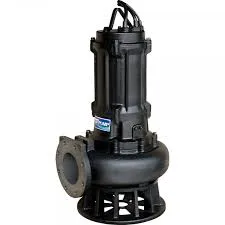English
- Afrikaans
- Albanian
- Amharic
- Arabic
- Armenian
- Azerbaijani
- Basque
- Belarusian
- Bengali
- Bosnian
- Bulgarian
- Catalan
- Cebuano
- Corsican
- Croatian
- Czech
- Danish
- Dutch
- English
- Esperanto
- Estonian
- Finnish
- French
- Frisian
- Galician
- Georgian
- German
- Greek
- Gujarati
- Haitian Creole
- hausa
- hawaiian
- Hebrew
- Hindi
- Miao
- Hungarian
- Icelandic
- igbo
- Indonesian
- irish
- Italian
- Japanese
- Javanese
- Kannada
- kazakh
- Khmer
- Rwandese
- Korean
- Kurdish
- Kyrgyz
- Lao
- Latin
- Latvian
- Lithuanian
- Luxembourgish
- Macedonian
- Malgashi
- Malay
- Malayalam
- Maltese
- Maori
- Marathi
- Mongolian
- Myanmar
- Nepali
- Norwegian
- Norwegian
- Occitan
- Pashto
- Persian
- Polish
- Portuguese
- Punjabi
- Romanian
- Russian
- Samoan
- Scottish Gaelic
- Serbian
- Sesotho
- Shona
- Sindhi
- Sinhala
- Slovak
- Slovenian
- Somali
- Spanish
- Sundanese
- Swahili
- Swedish
- Tagalog
- Tajik
- Tamil
- Tatar
- Telugu
- Thai
- Turkish
- Turkmen
- Ukrainian
- Urdu
- Uighur
- Uzbek
- Vietnamese
- Welsh
- Bantu
- Yiddish
- Yoruba
- Zulu
Telephone: +86 13120555503
Email: frank@cypump.com
Nov . 27, 2024 13:12 Back to list
Vertical Centrifugal Pipeline Pumps Cost Analysis and Pricing Trends
An Overview of Vertical Centrifugal Pipeline Pumps Pricing
When it comes to fluid transportation in various industrial applications, vertical centrifugal pipeline pumps are indispensable. Their ability to efficiently move fluids through pipelines makes them a vital component in sectors such as water treatment, agriculture, chemical processing, and more. However, one of the foremost considerations when selecting these pumps is their pricing, which can vary significantly based on various factors.
Understanding Vertical Centrifugal Pipeline Pumps
Vertical centrifugal pipeline pumps are designed to transport fluids from a lower level to a higher one, utilizing centrifugal force generated by a rotating impeller. These pumps are typically mounted vertically, making them space-efficient and ideal for installations where floor space is limited. Their design allows for higher efficiency rates and greater flow capacities, which are crucial in commercial and industrial settings.
Factors Influencing Pricing
1. Material of Construction The materials used in manufacturing vertical centrifugal pumps play a crucial role in determining the overall cost. Pumps made from high-quality stainless steel or specialized alloys tend to be more expensive due to their durability and resistance to corrosion and wear. On the other hand, pumps constructed from less durable materials, such as cast iron, may be more affordable but could incur higher maintenance costs over time.
2. Pump Capacity and Size The capacity of the pump, measured in gallons per minute (GPM) or liters per second (L/s), also influences the price. Larger capacity pumps are typically more costly due to the increased material requirements and complexity in design. Buyers need to ensure they are purchasing a pump that meets their specific flow rate and head requirements without overspending on unnecessary capacity.
vertical centrifugal pipeline pumps price

3. Pump Design and Features Advanced features such as variable speed drives, automation capabilities, and integrated monitoring systems add to the overall cost of the pump. While these features can enhance efficiency and operational flexibility, they may not be essential for every application. Therefore, businesses should carefully assess their needs to avoid overpaying for features that do not provide value.
4. Brand and Manufacturer The brand reputation and manufacturer can significantly influence pricing. Established brands with a proven track record might charge a premium for their products compared to lesser-known manufacturers. However, opting for reputable brands can often mean better customer service, warranties, and availability of replacement parts, which could be worth the investment in the long run.
5. Installation and Maintenance Costs It is also essential to factor in the installation and ongoing maintenance costs when considering the overall price of vertical centrifugal pipeline pumps. Complex installations may require specialized technicians, which can add to the initial costs. Additionally, regular maintenance is crucial for ensuring the pump's longevity and efficiency, which should be considered in the total cost of ownership.
Price Ranges
While prices for vertical centrifugal pipeline pumps can vary greatly, they generally range from a few hundred to several thousand dollars. Smaller, less complex models may start around the $500 mark, while larger, high-capacity units with advanced features can exceed $10,000. It’s essential for buyers to gather multiple quotes and compare similar models to find the best value for their specific needs.
Conclusion
In summary, the pricing of vertical centrifugal pipeline pumps is influenced by a multitude of factors, including material, size, design, brand reputation, and installation costs. Businesses should take the time to evaluate their requirements and budget carefully to ensure they select the right pump for their operations. By considering the overall cost of ownership and aligning it with the pump’s capabilities, buyers can make informed decisions that benefit their operations in the long run.
-
ISG Series Pipeline Pump - Chi Yuan Pumps | High Efficiency, Durable Design
NewsAug.01,2025
-
Advanced Flue Gas Desulfurization Pump with GPT-4 Turbo | Durable & Efficient
NewsJul.31,2025
-
ISG Series Vertical Pipeline Pump - Chi Yuan Pumps | Advanced Hydraulic Design&Durable Construction
NewsJul.31,2025
-
ISG Series Vertical Pipeline Pump - Chi Yuan Pumps | Energy Efficient & Low Noise
NewsJul.31,2025
-
pipeline pump - Chi Yuan Pumps Co., LTD.|High Efficiency&Low Noise
NewsJul.31,2025
-
ISG Series Vertical Pipeline Pump - Chi Yuan Pumps Co., LTD.|High Efficiency, Energy Saving, Low Noise
NewsJul.30,2025










